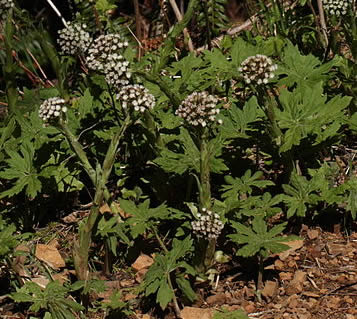Sweet Coltsfoot

Botanical Name: Petasites Frigidus
Common Name: Sweet Coltsfoot
Other Names: Nausak (bog ‘something’)
Found in: Moist, mossy meadows
Physical Characteristics: The leaves of the plant are generally toothed and triangular. The underside ot the leaf is white with pubescent fuzz. Leaf width ranges from .3 to 12 inches. A central stem bears a single whitish, yellowish, or purplish flower or a cluster of flowers. Coltsfoot is found growing in bogs, wet meadows, creek sides, and other wet places.
Nutritional Value: mucilage, alkaloid, saponins, tannin (especially in the leaf), zinc, potassium, calcium.
Parts of the plant used: Roots
When plant should be gathered: May – June (can be chopped out of the ground with an axe in winter (Port Graham students 1981))
Plant applications: Decoction, Infusion
Reported Benefits: After the long roots are cut into smaller lengths and mashed they are steeped or boiled and the tea drunk for colds, sore throats, tonsillitis, pneumonia, tuberculosis and other lung and respiratory problems. One person says coltsfoot roots cured measles.
Preparation/Processing: People harvest sweet coltsfoot roots during the growing season and freeze or dry them for future use. When dried, they boil them for five minutes or soak them in water overnight and then boil them.
WARNING: It’s said by some that while coltsfoot is likely to be effective for minor respiratory complaints, its leaves and flowers contain pyrrolizidine alkaloids, which can damage the liver.
